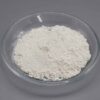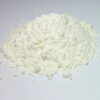MBTS rubber accelerator
MBTS MBTS; Accelerator for curing natural rubber, synthetic rubber and plastic regeneration. It is used in the production of all kinds of rubber, hose, tarpaulin and artificial silk. This accelerator is in the second class of six categories of rubber accelerators, namely thiazoles.
Thiazole derivatives are accelerators that are widely used in the rubber industry either alone or in combination with other accelerators. There are three different uses of thiazole. They all show a similar vulcanization effect.
This substance is non-toxic and has a slightly bitter smell and taste.
MBTS (benzothiazil disulfide) is a non-staining primary accelerator for use in natural and synthetic rubbers. Highly active above 280°F. To activate it, it is necessary to add zinc oxide, a fatty acid and sulfur. Secondary accelerators used in connection with MBTS are aldehyde amines, dithiocarbamates, guanidines and thiurams, which increase the efficiency. MBTS is also used as a retarder in polychloroprene systems. A mixture of MBTS and BBTS is often used in the rubber vulcanization process.
MBTS is a safe accelerator, but by adding Retarder PX, Retarder AK, or Retarder SAFE, its resistance to burn can be increased.
MBTS accelerator is available in the market as a white or yellow powder/granule. It has a relative density of 1.45 to 1.54, it dissolves in chloroform. It is insoluble in benzene, alcohol, carbon tetrachloride and does not dissolve in petro, water and acetic acid.
MBTS
Technical specifications of MBTS
Chemical name: Dibenzothiazole disulfide
Molecular formula: C14H8N2S4
Molecular weight: 332.46
Specific weight: 1.50-1.59
Melting point: 165 degrees Celsius
Humidity: maximum 5%
Maximum residue on 150 micrometer sieve: 0.1%
Maximum residue on 63 micrometer sieve: 0.5%
Maximum amount of ash: 0.30%
Maximum loss due to drying: 0.30%
Granule diameter: 1.5 mm
Application of MBTS
Making motor wheels
Scooter tires
Butyl tubes
belts
shoe



